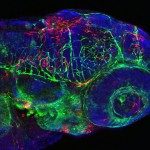Link to Pubmed [PMID] – 18779304
Am. J. Clin. Nutr. 2008 Sep;88(3):835S-9S
Unicellular eukaryotes and cultured cells from several animal species were invaluable in discovering the mechanisms that govern incorporation, handling, and excretion of copper at the cellular level. However, understanding the systemic regulation of copper availability and distribution among the different tissues of an intact multicellular organism has proven to be more challenging. This analysis is made even more difficult if the genetic variability among organisms is taken into account. The zebrafish has long been considered a powerful animal model because of its tractable genetics and embryology, but it has more recently become a player in environmental studies, pharmaceutical screening, and physiologic analysis. In particular, the use of the larvae, small enough to fit into a microtiter well, but developed enough to have full organ functionality, represents a convenient alternative for studies that aim to establish effects of environmental agents on the intact, living organism. Studies by our group and others have characterized absorption and tissue distribution of copper and have described the acute effects of the metal on larvae in terms of survival, organ stress, and functionality of sensory organs. A large body of work has shown that there is strong conservation in mechanisms and genes between fish and mammals, opening the possibility for genetic or small molecule screens or for generating fish models of human diseases related to copper metabolism. The variability within humans in terms of tolerance to copper excess or deficiency requires a genetic approach to be taken to understand the behavior of populations, because markers and vulnerabilities need to be identified. The zebrafish could represent a unique tool to move in this direction.

